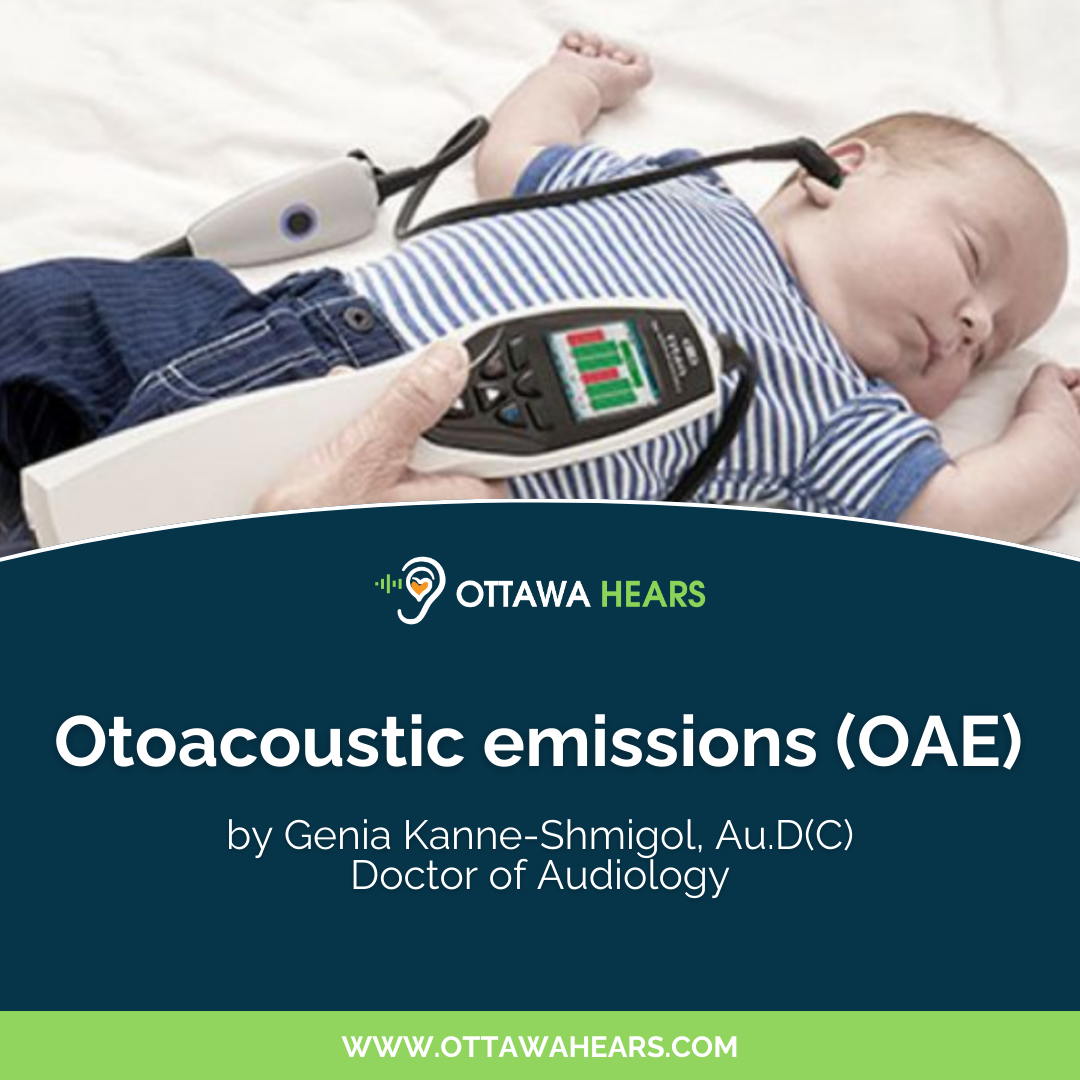Otoacoustic Emissions: A Pioneering Tool in Assessing Inner Ear Function

Otoacoustic Emissions are sounds generated within the inner ear and can be detected in the ear canal. First discovered in the late 1970s by Dr. David Kemp, these sounds occur when the cochlea, the spiral-shaped part of the inner ear responsible for hearing, actively processes sound. The cochlea's outer hair cells vibrate and "echo" back the sound, producing what we know as OAEs.
Distortion Product Otoacoustic Emissions (DPOAEs) and Transient Evoked Otoacoustic Emissions (TEOAEs) are two specific types of Otoacoustic Emissions that are commonly used in audiological assessments.
How Otoacoustic Emissions Work
This phenomenon takes place when we expose our ears to external sounds. The sound waves travel through the ear canal and middle ear, eventually reaching the cochlea in the inner ear. Here, they stimulate the outer hair cells, which respond by changing shape. This shape change creates a motion converted into sound waves and travels back through the middle ear to the ear canal, where it can be detected.
This process is silent and goes unnoticed by us because the sounds produced by OAEs are incredibly faint, typically around -10 to 20 decibels SPL, which is far below our hearing threshold.
The Role of Otoacoustic Emissions in Hearing Assessment
The primary function of OAE testing is to determine the "health" of the outer hair cells within the cochlea, which are vital for hearing. This method has significant advantages because it is non-invasive, quick, and can even be performed on sleeping patients, making it a perfect tool for newborn hearing screenings.
If OAEs are present, it usually indicates that the outer hair cells are functioning adequately. On the other hand, the absence of these emissions may signify damage to these cells or other parts of the auditory pathway, often leading to hearing loss.
The test doesn't directly measure hearing thresholds but serves as a good indication of whether a more detailed evaluation is necessary. For instance, individuals exposed to loud noise over a long period may have reduced or absent OAEs, suggesting potential noise-induced hearing loss.
At Ottawa Hears Audiology clinic, we are equipped with advanced audiological diagnostic tools to assess the function of the outer hear cells within the cochlea.
Contact us at www.ottawahears.com or call 343-800-5909.
References:
- Kemp, D. T. (1978). Stimulated acoustic emissions from within the human auditory system. Journal of the Acoustical Society of America, 64(5), 1386–1391. https://doi.org/10.1121/1.382104
- Gorga, M. P., Neely, S. T., Ohlrich, B., Hoover, B., Redner, J., & Peters, J. (1997). From laboratory to clinic: A large scale study of distortion product otoacoustic emissions in ears with normal hearing and ears with hearing loss. Ear and Hearing, 18(6), 440–455. https://doi.org/10.1097/00003446-199712000-00003
- Norton, S. J., Gorga, M. P., Widen, J. E., Folsom, R. C., Sininger, Y., Cone-Wesson, B., ... & Fletcher, K. (2000). Identification of neonatal hearing impairment: Evaluation of transient evoked otoacoustic emission, distortion product otoacoustic emission, and auditory brain stem response test performance. Ear and Hearing, 21(5), 508-528. https://doi.org/10.1097/00003446-200010000-00017
- Kemp, D. T. (2002). Otoacoustic emissions, their origin in cochlear function, and use. British Medical Bulletin, 63(1), 223-241. https://doi.org/10.1093/bmb/63.1.223
keywords: Doctor of Audiology, Hearing Loss, Tinnitus, Audiology, Audiologist, Hearing Aids, FM system, Cochlear Implants, Tinnitus, Ear Health, Deafness, Hearing Test, Sensorineural Hearing Loss, Conductive Hearing Loss, Mixed Hearing Loss, Noise-Induced Hearing Loss, Ear Infections, Hearing Loss Treatment, Hearing Loss Prevention, Audiologist Consultation, Hearing Loss in Seniors, Hearing Loss in Children, Assistive Listening Devices, Otology, Ear Anatomy, Hearing Rehabilitation, Hearing Loss Symptoms, Hearing Health, Ear Protection, Custom Earplugs, Ottawa Hears Audiology, Oticon, Phonak, Unitron, Widex, Signia, Resound, Starkey